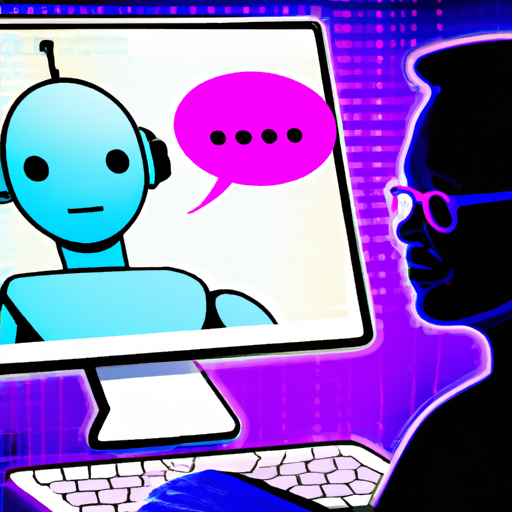The Power of Chatbots: Improving Customer Experience with AI
Introduction
In today's digital age, businesses are constantly looking for innovative ways to enhance customer experience and streamline operations. One such technology that has gained significant popularity in recent years is the Chatbot, a form of Artificial Intelligence (AI) that interacts with users through a conversational interface.

What is a Chatbot?
Simply put, a Chatbot is a computer program that uses AI to simulate human-like conversations with users. It is designed to understand and respond to user queries in a natural and conversational manner. Chatbots can be integrated into various platforms, such as websites, mobile applications, or even social media messaging apps, allowing businesses to engage with customers 24/7.
How do Chatbots Work?
Chatbots utilize various technologies to enable effective communication. They employ Natural Language Processing (NLP) algorithms to understand user input and sentiment analysis to interpret the emotions behind the text. By leveraging Machine Learning (ML) techniques, Chatbots continuously learn from past interactions, enabling them to provide more accurate and relevant responses over time.
The Benefits of Chatbots for Businesses
1. Enhanced Customer Support
- Chatbots serve as virtual assistants, providing immediate responses to user inquiries and efficiently handling frequently asked questions.
- This ensures that customers receive instant support, saving them from the frustration of waiting for human assistance.
- Chatbots also have the ability to handle multiple conversations simultaneously, significantly reducing customer response times.
2. Customer Engagement and Personalization
- By analyzing user data, Chatbots can offer personalized recommendations and suggestions, leading to a more engaging customer experience.
- They can remember user preferences and previous interactions, making customers feel valued and understood.
3. Cost and Time Efficiency
- Implementing Chatbots can significantly reduce operational costs associated with customer support functions.
- Chatbots can handle a large volume of inquiries simultaneously without the need for additional human resources.
- Consequently, businesses can allocate resources to other core operations, resulting in cost savings and increased productivity.
4. Availability and Accessibility
- Unlike human agents, Chatbots are available 24/7, providing round-the-clock support to customers.
- This ensures that businesses can cater to global audiences and serve customers in different time zones.
- Chatbots are also accessible across multiple channels, including websites, messaging apps, and smart speakers, allowing businesses to meet customers wherever they are.
5. Data Collection and Analysis
- Every interaction with a Chatbot generates valuable data that can be used to gain insights into customer preferences, trends, and pain points.
- Businesses can leverage this data to make more informed decisions, improve their products or services, and create targeted marketing campaigns.
Challenges and Considerations
While Chatbots offer many benefits, there are challenges to consider when implementing them. Chatbots may struggle with complex inquiries or understanding unique language nuances. Careful programming and ongoing monitoring are necessary to ensure a seamless user experience. Additionally, maintaining an appropriate balance between human and automated interactions is crucial, as some customers may prefer a human touch in certain situations.
Conclusion
Chatbots have revolutionized the way businesses interact with customers, offering an efficient and personalized customer experience. By leveraging AI technologies, businesses can enhance customer support, personalize recommendations, reduce costs, and gain valuable insights. As technology continues to advance, Chatbots will undoubtedly play a significant role in shaping the future of customer engagement. It is essential for businesses to embrace this technology to stay competitive and provide exceptional customer service in the digital era.